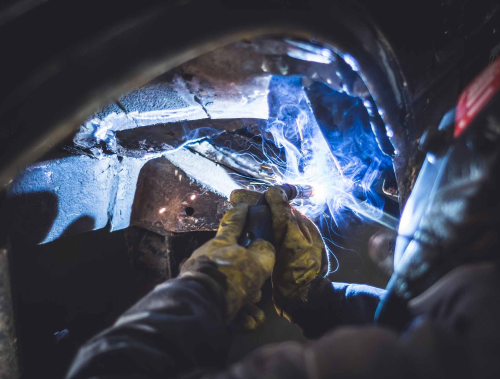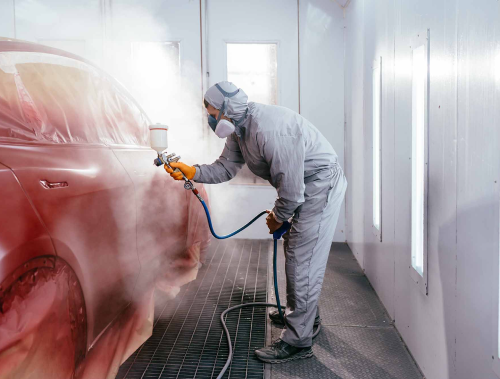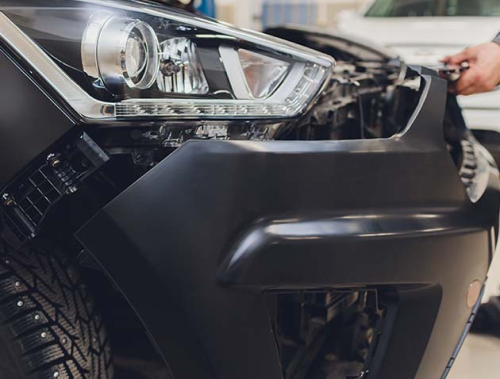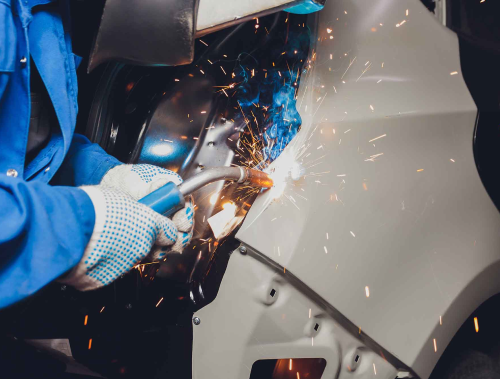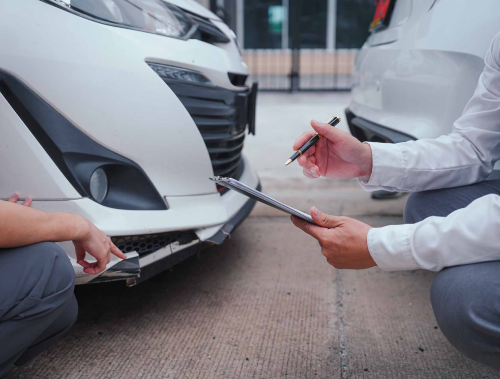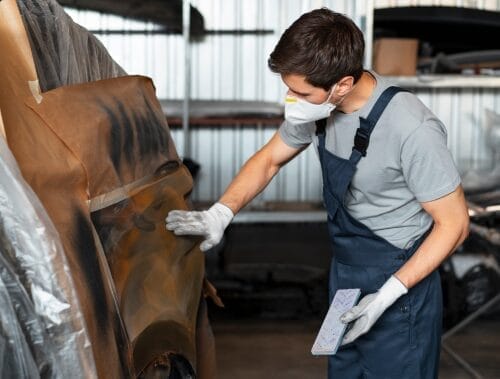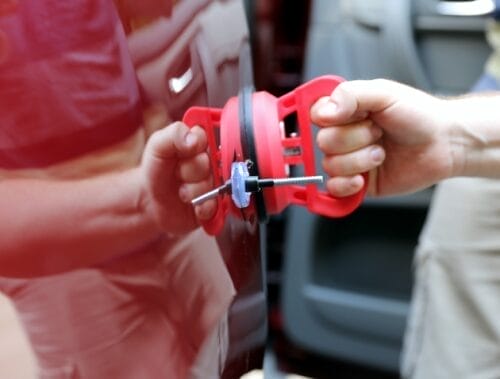Auto frame damage refers to any harm or deformation to the vehicle’s structural frame — the “backbone” of the car. Car owners and buyers must understand auto frame damage because it significantly affects the vehicle’s safety, performance, and resale value. Recognizing and addressing frame damage early can save you from costly repairs and potential safety hazards.
What is Auto Frame Damage?
Auto frame damage occurs when the structural support system of a vehicle is compromised either by collision or age. Your car’s frame is essential for maintaining the car’s shape and ensuring that it functions properly and is safe to drive. Frame damage can range from minor bends to severe deformations that affect the car’s drivability.
Types of Frame Damage
- Bent Frame: This type of damage happens when a part of the frame is pushed out of alignment, often due to collisions. It can lead to issues with the car’s suspension and alignment.
- Twisted Frame: A twisted frame occurs when the frame is rotated or torqued unevenly, usually from severe impacts. This type of damage can cause significant handling problems.
- Sagging Frame: This happens when the middle part of the frame sags, usually due to rust or prolonged wear and tear. It can cause the vehicle to sit unevenly, affect how it handles on the road, and tire wear.
Causes of Auto Frame Damage
- Collisions: Major accidents can deform the frame significantly, even if the damage isn’t immediately visible. The force of impact in a car collision can bend, twist, or cause the frame to sag, compromising the vehicle’s structural integrity.
- Potholes: Driving over potholes, especially at high speeds, can cause sudden jolts to the vehicle’s frame. Repeated exposure to such impacts can gradually damage the frame.
- Poor Driving Conditions: Regularly driving on rough, uneven, or poorly maintained roads can stress the frame over time, leading to potential damage.
Prevention Tips
- Defensive Driving Practices: By practicing defensive driving, such as maintaining a safe distance from other vehicles and avoiding sudden maneuvers, you can reduce the risk of collisions and frame damage.
- Regular Vehicle Maintenance: Regularly inspecting your vehicle can help detect early signs of frame stress or damage. Routine maintenance ensures that your car remains in good condition and can prevent minor issues from becoming major problems.
Signs of Frame Damage
Visual Indicators
- Uneven Tire Wear: When the frame is damaged, it can cause misalignment, leading to uneven tire wear. This is often one of the first signs of frame issues.
- Misaligned Doors: If the doors don’t close properly or appear misaligned, it could indicate that the frame is twisted or bent.
- Visible Damage to the Frame: Cracks, bends, or rust spots on the frame are clear signs of damage. Regularly inspecting the frame can help identify these issues early.
Performance Issues
- Difficulty Steering: Frame damage can make steering difficult and less responsive. If you notice that your car pulls to one side or the steering wheel feels off-center, it could be due to a damaged frame.
- Poor Alignment: Persistent auto alignment issues, even after adjustments, can indicate frame damage. The vehicle may not track straight and might require frequent alignment corrections.
- Unusual Vibrations: Unusual vibrations through the steering wheel or seat can be a sign of underlying frame issues. These vibrations often indicate that the frame is not holding the vehicle together properly.
Impact of Frame Damage
Safety Concerns
When a car’s frame is damaged, its structural integrity is compromised. The frame is designed to absorb and distribute impact forces during a collision. Damage to the frame means it can no longer perform this function effectively, putting passengers at greater risk in the event of an accident.
Driving a vehicle with frame damage increases the likelihood of further accidents. The compromised structure can lead to unpredictable handling and stability issues, making your car less safe on the road.
Performance Issues
A damaged frame can significantly reduce a vehicle’s drivability. Misalignment caused by frame damage can make steering difficult and less responsive, affecting the overall driving experience.
Frame damage can lead to poor handling, making it challenging to control the vehicle. Issues such as uneven tire wear, poor alignment, and unusual vibrations can all stem from a compromised frame, and impact the vehicle’s performance.
Resale Value
Frame damage drastically decreases a car’s market value. Potential buyers are wary of vehicles with structural issues due to the associated repair costs and safety concerns.
Selling a vehicle with frame damage can be difficult. Many buyers and dealerships avoid cars with known frame issues, making it challenging to find interested parties willing to purchase the vehicle at a reasonable price.
Detection Methods
Professional Inspections
After a collision, it’s crucial to have a professional inspect your vehicle for frame damage. Trained professionals can identify issues that may not be visible to the untrained eye, ensuring your vehicle is safe to drive.
- Laser Measuring Systems: These systems provide precise measurements of the frame’s alignment, identifying any deviations from the manufacturer’s specifications.
- Computerized Diagnostics: Advanced diagnostic tools can pinpoint structural weaknesses and stress points, helping to assess the extent of the frame damage.
DIY Detection Tips
- Check for Visible Signs of Damage: Regularly inspect your vehicle for visible signs of frame damage, such as cracks, bends, or rust spots. These are clear indicators that the frame may be compromised.
- Monitor for Performance Issues: Pay attention to changes in your vehicle’s performance, such as difficulty steering, alignment issues, or unusual vibrations. These symptoms often signal underlying frame damage.
Repair Options
Types of Repairs
- Frame Straightening: Frame straightening involves using hydraulic machines to push or pull the frame back into its original shape. This process is critical for restoring the vehicle’s structural integrity.
- Welding and Reinforcement: For cracks and splits, welding is used to repair the damage. Reinforcement may also be added to strengthen weakened areas, ensuring the frame can withstand future stresses.
Cost Considerations
- Average Cost of Auto Frame Repairs: The cost of frame repair can vary widely, ranging from a few hundred to several thousand dollars. The final price depends on the extent of the damage and the complexity of the repair.
- Factors Influencing Repair Costs: Several factors influence repair costs, including the severity of the damage, labor rates, and the need for additional parts or reinforcement materials. Geographic location and the specific repair shop may also play a role in determining the overall cost.
Conclusion
Understanding and addressing frame damage is crucial for maintaining your vehicle’s safety, performance, and value. Ignoring frame issues can lead to more severe problems and pose significant safety risks to you and your passengers.
If you suspect your car’s frame is damaged, contact your nearest Stonewall Collision & Auto Paint location immediately. A thorough inspection and prompt repairs can ensure your vehicle remains safe and reliable.

